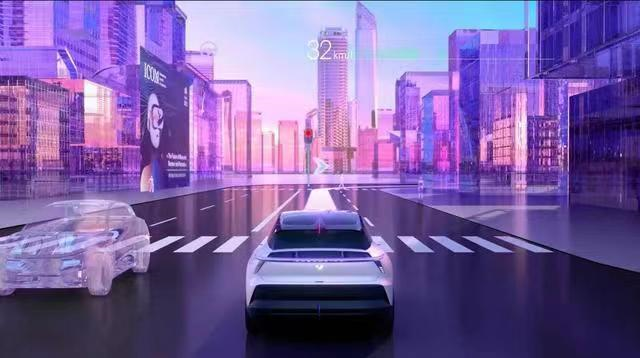Karakush
It feels like I attended a product launch event, yet it also feels like I didn’t.
Last night, Jidu Auto officially unveiled its first concept car, the ROBO-01.
What’s unique about it is that the launch event was held in the metaverse of Xiruo.
The scene was like this:
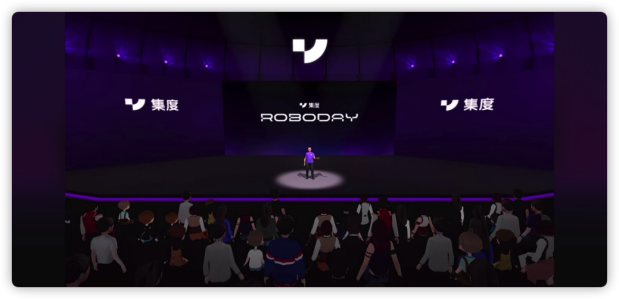
The CEO looked like this:
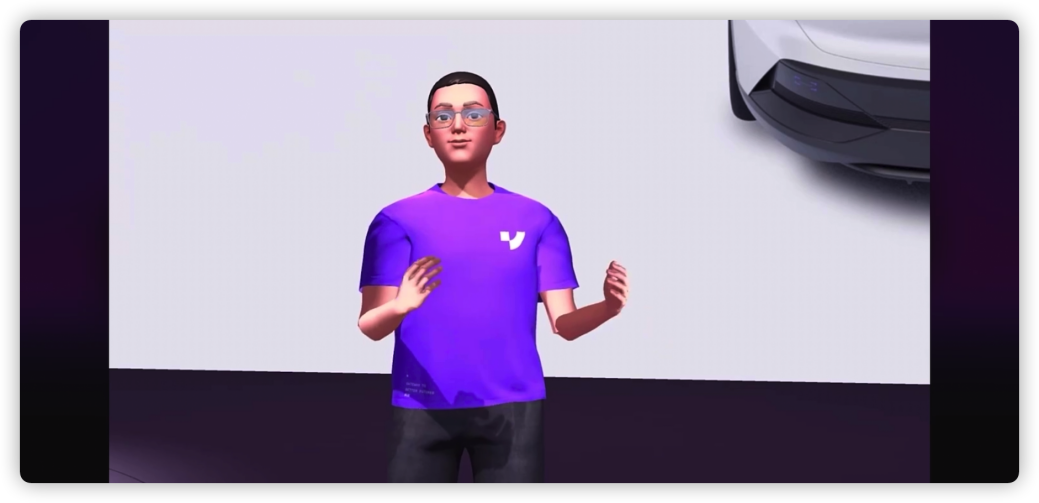
And the concept car looked like this:
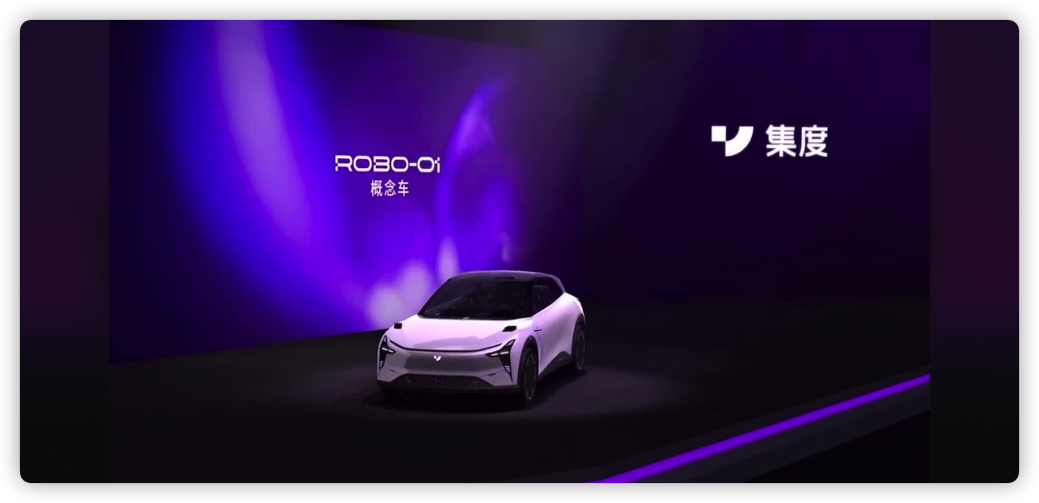
There wasn’t a single piece of real metal, which left many teachers and spectators culturally shocked.
In terms of visual experience, this online livestream was like a 40-minute long CG science popularization short film, and the quality of the graphic design wasn’t remarkable. This can be mainly attributed to Xiruo, which is the first domestic metaverse product and currently has a rating of only 2.3 in the App Store, leaving plenty of room for improvement. As an ordinary middle-aged person, observing the business via WeChat was like watching someone else dance on the other side of the mountain soberly.
At this point, the industry naturally had high expectations for the physical vehicle.
Jidu Auto has been established for 464 days and will start accepting orders in the second half of this year, with deliveries expected next year. The ROBO-01 concept car is the first central display of Jidu’s definition of its mass-produced cars as a rapidly growing enterprise.
Usually, high-quality, realistic graphics can better reflect some core information, such as whether the car can be produced within a year, what technological advancements have been made, the progress of verifications, what ideas can be manufactured, etc. Jidu Auto doesn’t seem to have this type of self-evident anxiety.
Often, as long as one is confident, others will be the ones who lack confidence:
All cultural shocks, to some extent, are due to a lack of insight. Due to a lack of insight into the metaverse, it may prevent people from realizing its profound meaning. In reality, this launch event was very revealing of Jidu Auto’s strength, and there is currently no opponent within 5 million.
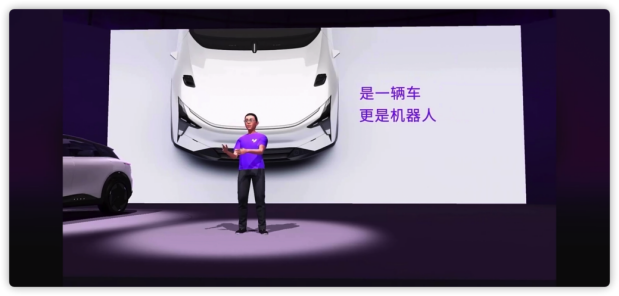
First of all, the character design is rock-solid. Jidu Auto always recklessly claims to be a “car robot,” and “a car” alone is not enough to describe its intelligent identity. It must be said that this (surprisingly) has been fully reflected in the graphic design.
It has eliminated door handles. Not hidden door handles, but no door handles at all.The interior of the car has also eliminated complex physical buttons, even basic gear shifters and stalks. In theory, all functions can be called up through AI voice control.
In addition, the center seam has been eliminated and replaced with a 3D seamless high-definition display. Compared to “some so-called interconnected screens that are just a few small screens spliced together” and “even the borders can run like a horse”, only a whole piece can be said to provide an immersive experience.
As for the physical components that cannot be completely eliminated, a large number of them use a variable structure and only actively protrude when necessary.
For example, the active lifting rear wing can automatically raise and lower depending on the real-time vehicle speed during automatic driving, reduce air resistance at low speeds to optimize range, and provide downforce for handling at high speeds.
Another example is the two lidar sensors installed on the front hood of the car as pop-up design, automatically lift up during automatic driving and auxiliary function activation, providing a 180-degree field of view detection angle, and bringing stronger recognition ability for extreme scenarios such as ghosts and left-right obstructions.
When the schematic diagram of the car was released in April, Jidu was greeted with concerns from its peers, who believed that the position couldn’t pass the latest pedestrian collision regulations.
Therefore, Jidu emphasized this time that, for the sake of pedestrian collision safety, it has set up an active collapse mechanism for the lidar bracket. Once the collision sensor detects a collision signal, the lidar would be quickly retracted. This technology has obtained a national patent.
In the cabin, a retractable U-shaped steering wheel is provided, which automatically retracts during autonomous driving, depriving the driver’s legal right to grip the steering wheel, solving the problem of view obstruction, and allowing you to fully enjoy the road conditions and the display of the large screen.
According to Xia Yiping, “This is Jidu’s active exploration of the future interior design under the accumulation of autonomous driving capabilities.” In terms of rhetoric, its mass production possibility is relatively low. However, if only line control + odd shape is achieved, supporting the variable steering ratio of vehicles is still possible. Currently, Tesla and Toyota are both working on mass production and promotion.
Additionally, there are also lifts and lowing speakers at both sides of the central dashboard.When broken down, there is nothing beyond the realm of cognition. When combined as a whole, it is extremely innovative. The concept of its “robot” lies not only in its initiative but also in its elimination of human involvement through simplified designs, providing not only technological convenience, but also greatly optimizing the possibility of human participation.
Whether all functionalities can be mass-produced immediately, this is a technical belief that is not commonly held within the automotive industry. At its core, it is based on the confidence in the higher-level autonomous driving scenarios and the degree of completion of the cabin intelligence.
In fact, Jidu enjoys putting its core technologies in the spotlight.
For example, its intelligent cabin claims to provide “millisecond-level” intelligent voice response, supporting full-scenario and offline use. Together with visual perception, voiceprint recognition and lip-reading capture, “human-like” interactions can be achieved, such as opening music and ambiance that match facial expressions.
Interactions extend to the outside of the car, where AI pixel headlights will display social-grade light language according to the external environment sensed, such as reminding pedestrians during low-speed autonomous driving, as well as dynamic sentinel mode and free-style dance effects.
At the same time, they claim to have advanced point-to-point autonomous driving capabilities, which can be achieved in high-speed areas, urban areas, and parking areas, such as left turns with no protection, traffic signal recognition, obstacle avoidance, free entry and exit ramp, etc. Users can “use it straight out of the box” when the product is launched and delivered.
Moreover, “use it straight out of the box” is their another key feature. Jidu claims that mass-produced vehicles will have a 90% overlap in terms of appearance, interior, and functionality.
In addition to autonomous driving, its engineering capabilities are also astonishing. In particular, in addition to the numerous variable structures mentioned above, ROBO-01 also adopts a butterfly-wing door for driver and passenger, no B-pillar, and a million-level configuration with doors that open opposite each other.
Jidu does not have its own manufacturing capabilities. It is a joint venture established by Baidu and Geely, which operates independently. In addition to capital, Baidu provides technology and Geely provides manufacturing. According to previous information, Jidu’s first car will be manufactured at the Geely Hangzhou Bay factory, and it will also use Geely’s supply chain network and resources.
While Geely has not verified the reliability of large-scale wing-door products, they have demonstrated the ability to make anything from clothing to satellites.
The greater challenge lies in cost control, or feasibility. In the May Baidu 2022 Q1 earnings conference call, Li Yanhong revealed that Jidu’s target market is household cars, priced at around 200,000 yuan.
The hard costs are not only about the door.As is well-known, the vehicle is equipped with a total of 31 external sensors, including 5 millimeter-wave radars, 12 ultrasonic radars, and 12 cameras (7 of which are 8 million pixels, 4 are 3 million pixels, and 1 is 2 million pixels), as well as the expensive lidar. To power this system, the vehicle is also equipped with two NVIDIA Orin X chips.
Currently, brands with specifications such as high-performance chips, 8 million pixel cameras, and lidar (all of which are Velodyne AT128), such as NIO, Lucid, and Xpeng, are not family cars priced at 200,000 RMB.
At the same time, the vehicle is also the first to be equipped with Qualcomm’s fourth-generation Snapdragon 8295, which supports an intelligent cockpit.
What is particularly fascinating is the 10% that was cut.
Thirdly, there is the possibility of ecological empowerment.
At present, Baidu’s main contribution is in autonomous driving. As the only full-stack application of Apollo autonomous driving for civil automobile companies, the vehicle has been re-integrated and developed for verification, and through SIMUCar, it has completed intelligent development 15 months ahead of the industry average.
Metaverse is Baidu’s next treasure, and Paddle is also Baidu’s product.
Therefore, the vehicle is placed on Paddle, and perhaps it will become a symbol of a new era.
We have always been exploring where the boundary of vehicle intelligence lies. Can it become a central intelligent terminal that connects everything like a mobile phone, or is it just an intelligent terminal that uses AI technology, like a refrigerator, TV, or washing machine? As practitioners, we all hope it is the former, but the reality is that the current intelligence is almost all in the mobile phone ecosystem. How can the ceiling of vehicle intelligence be integrated with the mobile phone experience?
The breakthrough lies in whether an automotive scene ecosystem can be formed.
At the press conference, the vehicle introduced its first car owner, a digital person named C++ (Xijiajia…), who is also a product of Baidu. She drove ROBO-01 and appeared on stage. Although it looks like another well-made CG animation, the significance is “dialogue between artificial intelligence and artificial intelligence,” and by “using a virtual person to drive a car,” it opens up “a real era of artificial intelligence.”
One of JDI’s missions is to integrate numbers and reality. One of the features on their concept car is a 3D human-machine co-driving map, which achieves static map navigation and dynamic perception data fusion, allowing the vehicle’s perception to run on a three-dimensional map.
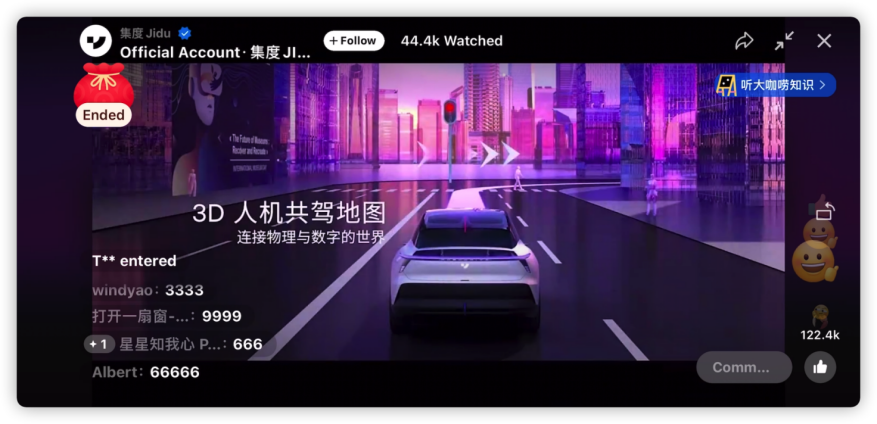
It seems like an unproductive and uneconomical invention, but it enabled significant progress for civilization when automobiles were invented in the 19th century.
As for the metal body that we are all concerned about, JDI plans to officially launch the limited edition of their first mass-produced car in the autumn of 2022, and unveil the design of their second mass-produced car at the Guangzhou Auto Show. Changes always come unexpectedly.
This article is a translation by ChatGPT of a Chinese report from 42HOW. If you have any questions about it, please email bd@42how.com.
